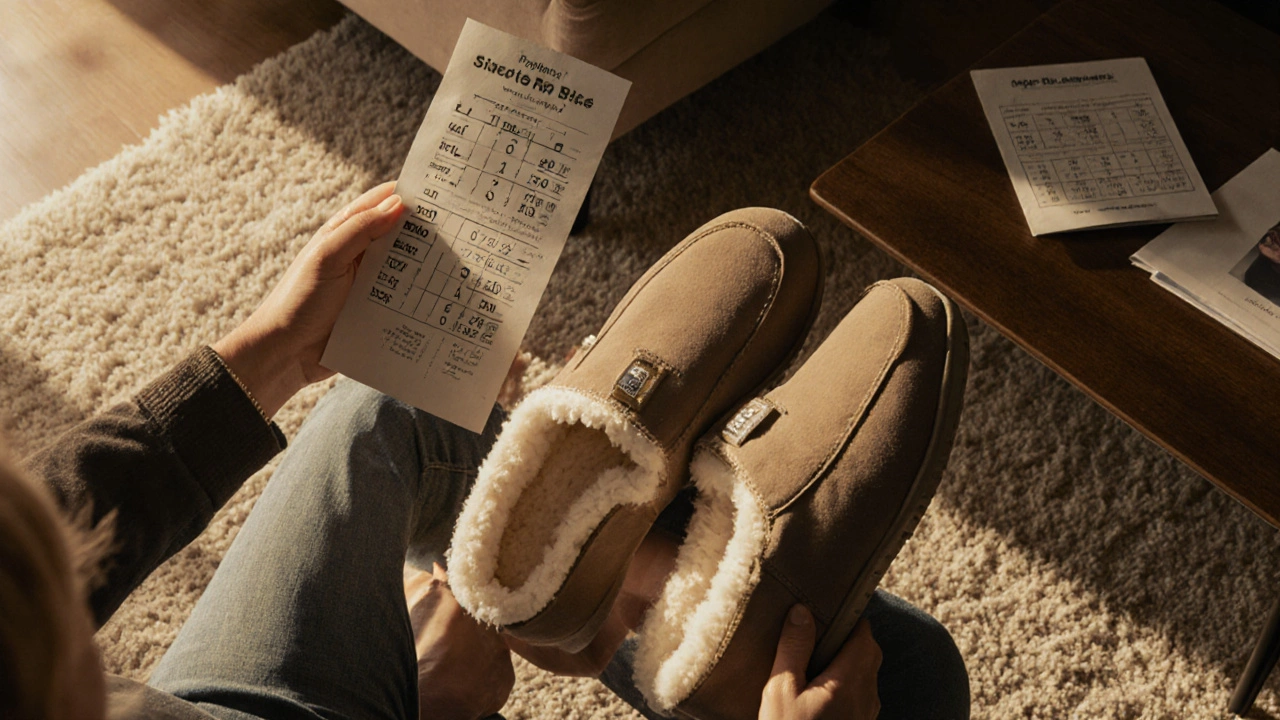Slipper Sizes: Find Your Perfect Fit for Comfort and Style
When it comes to slipper sizes, the standard measurements used to match your foot length and width to the right pair of indoor footwear. Also known as house shoe sizes, they’re not just about comfort—they’re about avoiding pain, blisters, and awkward wobbling around the house. Getting slipper sizes wrong is one of those quiet frustrations most people live with. You buy a pair, they feel fine at first, but by midday your toes are squished or your heels keep slipping out. It’s not the brand’s fault—it’s usually a sizing mismatch.
Slipper sizes don’t always match your regular shoe size. A UK size 8 in trainers might be a size 7 or even 6 in slippers, especially if they’re made with soft, cushioned materials that compress over time. UK slipper sizes, the standard sizing system used in British footwear retail, often differ slightly from US or EU measurements. Also known as British shoe sizes, they’re based on barleycorns, a historic unit still used in the UK today. And if you’re shopping online, that’s where things get tricky. Many brands don’t list foot length in centimeters, so you’re left guessing. That’s why knowing your actual foot measurement matters more than your usual shoe size. Grab a ruler, stand on a piece of paper, trace your foot, then measure from heel to longest toe. Add half a centimeter for wiggle room. That’s your real size.
Not all slippers are made the same. Fuzzy wool slippers stretch more than leather ones. Rubber-soled house shoes run snug. Memory foam insoles can compress by up to 5mm after a week of wear. indoor footwear, any shoe designed for use inside the home, from plush moccasins to slide-on clogs. Also known as house shoes, they prioritize comfort over support, which means sizing needs to be exact. If you have wide feet, look for brands that offer width options. If you’re between sizes, size up—especially if you plan to wear socks. And don’t forget: your feet swell during the day. Measure them in the afternoon, not first thing in the morning.
There’s no magic formula, but there’s a smart way. Check return policies. Buy from retailers that let you swap sizes for free. Read reviews that mention fit—phrases like "runs small" or "true to size" are gold. And if you’re still unsure, think about what you’ll wear them with. Barefoot? Go snug. With thick socks? Go one size up. Your feet will thank you.
Below, you’ll find real-world guides on how different brands size their slippers, what Americans call them, how to care for them so they last, and even how they fit into broader trends in home footwear. No fluff. Just practical info to help you stop guessing and start stepping comfortably.
- Cleo Fairchild
- Oct, 26 2025
- 0 Comments
Are Slipper Sizes the Same as Shoe Sizes? - The Complete Guide
Discover whether slipper sizes match shoe sizes, learn how to measure your foot, read conversion charts, and get tips for finding the perfect fit.
